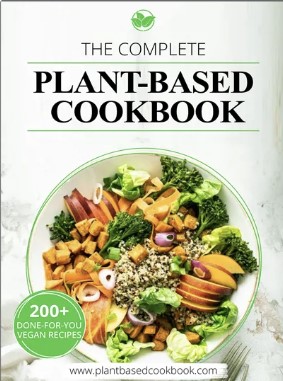Learn how to make perfect homemade pasta using two utensils and four ingredients. Create delicious pasta as they did 4,000 years ago.
If you’re looking to create the perfect homemade pasta, you’ve come to the right place.
.
.
.
As early as the 4th century, Asians were making perfect homemade pasta using millet or rice flour. These were primitive versions of the handmade pasta we recognize today. In the 13th and 14th centuries, pasta made its way to Italy. By the 18th century, machines were developed to knead and extrude dough, leading to the production of dry pasta that we find on store shelves. However, none of this dry pasta can compare to the textures and flavors of homemade versions.
.
Perfect Homemade Pasta Ingredients:
1 Cup Pasta Flour (extra flour for dusting)
2 Eggs
2 Tbsp Olive oil
1 tsp Salt

.
.


Directions for the dough:
Start with a dry and clean work surface. Lightly dust your work surface with flour. This will keep your fresh pasta dough from sticking to the surface. Semolina flour works well for this purpose. Semolina flour has a more granular texture and will help the ball of pasta dough resist sticking to the surface.
- Sift the flour and create a pile. Make a create in the pile large enough to hold 2 eggs. Crack the eggs, drop them in the crater, and add Olive oil and salt.
- With a fork whisk the eggs while allowing the flour to mix with the liquid center. Once it is all combined chop the dough together with a bench scraper.
- Now, shape your homemade pasta dough until the dough forms into a ball. Be sure to keep dusting your work surface with flour. The pasta will absorb some of the flour to prevent sticking. Pay attention to your dough ball; it will indicate when it is too wet.
- Knead the dough ball with the heel of your hand until it bounces back when pressed with your finger. This process should take about ten minutes. You should be able to stretch the dough without it tearing. Once it reaches this point, it is ready to be shaped into various types of pasta shapes.
- At this point wrap the dough ball with cling wrap and let the dough rest for extra time of 15-30 minutes
Time to roll out the perfect homemade pasta dough:
- Unwrap the pasta dough recipe and cut it into four quadrants with your bench scraper or knife. take one piece and wrap the remaining pasta dough in plastic wrap to prevent it from drying out.
- Shape it into an oblong shape, and start rolling it out. make sure your roller is well-dusted with a little flour. Keep rolling in both directions until you have a long round sheet of pasta a round 1-2 mm thick. Remember to roll over the edges of the dough to make sure your sheet of pasta has an even thickness.
- At this point you are ready to cut the pasta into long pasta shapes



Now let’s cut the long pasta:
- Next, make sure your sheet of perfect homemade pasta is dusted with the surrounding flour on both sides.
- Roll the sheet of pasta lengthwise, and cut it with a sharp knife, pizza cutter, or even a special pasta cutter to make different types of long pasta:
- Linguine 2-3 mm wide
- Fettucini 3-4 mm wide
- Tagliatelle 6-8 mm wide
- Pappardelle 10-12 mm wide
After the pasta is cut gently unroll the cut pasta and lay it lengthwise on a wooden surface or a tea towel. Repeat his process with the rest of the dough. At this time you can cook the pasta immediately or let it dry.
Ravioli or Tortellini:
There are endless possibilities for this homemade pasta recipe. You can experiment with various shapes and sizes of stuffed pasta, and the filling options are limitless as well. By incorporating different types of protein and vegetables, you can create a balanced meal. If your pasta is already made, you can easily whip up quick and delicious weeknight dinners. Simply boil water for the pasta in one pot while preparing the sauce in a separate pan. In less than 30 minutes, you’ll have a gourmet Italian meal ready to enjoy.


.
.

Cook the perfect homemade pasta:
- Take a large pot of water add salt and heat to a rolling boil
- Gently place the pasta in the boiling water
- Cook the pasta for about 3 minutes. The cooking time may vary depending on the type of long pasta shape you use. Before serving the pasta or mixing it with your sauce, take a bite to ensure it is cooked to your preference. Remember fresh pasta cooks in much less time than dry pasta.
.
Different types of flour:
Semolina flour is ground from hard wheat (Durum Wheat) which has a higher protein content. You may think a higher protein content is good, but it also has more Gluten. If you are making semolina pasta dough with semolina flour it is important to use egg or ricotta cheese in your pasta, otherwise, it will have a rubberlike texture. I have made pasta with water and semolina several times, and it was terrible. It was too chewy and had a rubbery texture.
All purpose flour is a type of white flour milled from a mixture of soft flours. All purpose flour is also less elastic than semolina flour. You will notice when rolling the flour it will keep its stretched-out shape easier than more granular flour. White flour has a neutral taste while semolina flour can have a nuttier taste.
Some chefs have used whole wheat flour to make fresh homemade pasta. The extra bran and germ in the flour retain more water making the piece of dough harder to knead. It will also be more difficult to make more delicate pasta shapes due to the higher grain content in the flour. The term “soft wheat flour” refers to flour with less gluten, while “hard whole wheat flour” contains a higher gluten content. The best flour in my experience has been “00” pasta flour, but your results may differ. Try your own pasta versions until you nail the right one. For the first time follow these easy pasta recipes and make changes as you experiment with different ingredients.
.
Storage of the perfect homemade pasta:
The main purpose of making fresh pasta is to enjoy its delicate texture and unique flavors, which are in contrast to those of dry pasta. Therefore, it’s best to cook and eat your fresh pasta as soon as possible. If you need to, you can let it dry for a few hours, then refrigerate it in an airtight container for a few days, or freeze it for several months. Keep in mind that since it is egg pasta, it’s recommended to refrigerate your pasta dough if you’re not using it right away.

Pasta Machine?
In the late 1800s to early 1900s, the Industrial Revolution significantly influenced the way we make homemade pasta. If you prefer not to toil over a rolling pin or knead the dough by hand, you can use a pasta machine. Alternatively, you can use a dough hook with a stand mixer to knead the dough. If you have a pasta roller attachment for your mixer, you can also use that to handle the task of rolling out the pasta. There are also attachments for cutting the pasta with your stand mixer.
If you don’t have a stand mixer, you can use a manual pasta maker to roll out and cut the dough, but you will still need to knead the pasta dough by hand. These hand-crank machines were invented in 1857 by Innocento Manzetti. His design featured two cylinders for flattening the dough and resembles the machines commonly used today.
Alternatively, if you’re looking for a way to achieve the delicate texture and unique flavors of homemade pasta with less effort, you can use a pasta extrusion machine. I’ve never used one myself, but I remember when I was a kid, my dad bought one for Nonna as a Christmas gift. Unfortunately, she never opened the box.
Variations of perfect homemade pasta:
In addition to the various shapes of pasta, you can experiment with different ingredients. Some chefs use only egg yolks, which gives the pasta a richer, more pronounced egg flavor. For a vegan version, water can be used instead. Adding ricotta cheese is another great option, as it creates a softer texture and adds a nutty flavor to the pasta. When making ravioli or tortellini, there are countless filling recipes and combinations to explore.
Incorporating herbs and vegetables into your pasta dough can infuse unique flavors into the pasta while also enhancing the visual appeal of your dish with vibrant colors. Some popular options for this include basil, sun-dried tomato paste, spinach, and oregano.
Pasta can be considered a form of art. I have seen chefs create stunning presentations by weaving strips of differently colored pasta in a lattice pattern and then rolling out the sheet to craft impressive ravioli and tortellini.
I hope you enjoy making homemade perfect pasta as much as I have enjoyed sharing it with you. If you choose to make the pasta let me know how you liked it in the comment section. Furthermore if you have any questions or concerns please contact me, and I will respond quickly. Remember Cooking is an art, your pan is your palette.

Ingredients
- 1 cup "00" Pasta flour
- 2 Eggs
- 2 tbsp Olive Oil
- 1 tsp Salt
Instructions
Directions for the dough:
- Start with a dry and clean work surface. Lightly dust your work surface with flour. This will keep your fresh pasta dough from sticking to the surface. Semolina flour works well for this purpose. Semolina flour has a more granular texture and will help the ball of pasta dough resist sticking to the surface.
- Sift the flour and create a pile. Make a create in the pile large enough to hold 2 eggs. Crack the eggs, drop them in the crater, and add Olive oil and salt.
- With a fork whisk the eggs while allowing the flour to mix with the liquid center. Once it is all combined chop the dough together with a bench scraper.
- Now, shape your homemade pasta dough until the dough forms into a ball. Be sure to keep dusting your work surface with flour. The pasta will absorb some of the flour to prevent sticking. Pay attention to your dough ball; it will indicate when it is too wet.
- Knead the dough ball with the heel of your hand until it bounces back when pressed with your finger. This process should take about ten minutes. You should be able to stretch the dough without it tearing. Once it reaches this point, it is ready to be shaped into various types of pasta shapes.
- At this point wrap the dough ball with cling wrap and let the dough rest for extra time of 15-30 minutes
Time to roll out the perfect homemade pasta dough:
- Unwrap the pasta dough recipe and cut it into four quadrants with your bench scraper or knife. take one piece and wrap the remaining pasta dough in plastic wrap to prevent it from drying out.
- Shape it into an oblong shape, and start rolling it out. make sure your roller is well-dusted with a little flour. Keep rolling in both directions until you have a long round sheet of pasta a round 1-2 mm thick. Remember to roll over the edges of the dough to make sure your sheet of pasta has an even thickness.
- At this point you are ready to cut the pasta into long pasta shapes
Now let’s cut the long pasta:
- Next, make sure your sheet of perfect homemade pasta is dusted with the surrounding flour on both sides.
- Roll the sheet of pasta lengthwise, and cut it with a sharp knife, pizza cutter, or even a special pasta cutter to make different types of long pasta:
- Linguine 2-3 mm wide
- Fettucini 3-4 mm wide
- Tagliatelle 6-8 mm wide
- Pappardelle 10-12 mm wide
- After the pasta is cut gently unroll the cut pasta and lay it lengthwise on a wooden surface or a tea towel. Repeat his process with the rest of the dough. At this time you can cook the pasta immediately or let it dry.
Cook the perfect homemade pasta:
- Take a large pot of water add salt and heat to a rolling boil
- Gently place the pasta in the boiling water
- Cook the pasta for about 3 minutes. The cooking time may vary depending on the type of long pasta shape you use. Before serving the pasta or mixing it with your sauce, take a bite to ensure it is cooked to your preference. Remember fresh pasta cooks in much less time than dry pasta.








Pingback: Easy Seafood Linguine with Lemon Butter Sauce - Chef Gianni Cooks